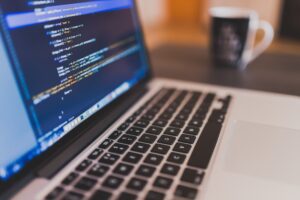Agile retrospectives are an important part of the Agile software development lifecycle. They provide teams with the opportunity to inspect and adapt their processes. However, manually facilitating retrospectives can be time-consuming and repetitive. This is where Python can help automate parts of the retrospective process.
Setting Up the Environment
To get started with automating retrospectives with Python, you'll need to set up your environment. This involves:
- Installing Python on your machine
- Installing packages like Pandas, Matplotlib, and NLTK for data manipulation and analysis
- Setting up an IDE like Jupyter Notebook for development
- Connecting to data sources like survey tools, Slack, JIRA, and GitHub
You may also want to use a retro tool or other digital whiteboard to display outputs.
Gathering Retrospective Data
A key part of retrospectives is gathering feedback from team members. Python can help automate the collection of this data.
You can use Python to:
- Send out retrospective surveys to team members
- Aggregate survey results into a Pandas dataframe
- Pull data from other sources like JIRA, Github, Slack
- Clean and preprocess data for analysis
This provides an efficient way to collect quantitative and qualitative information from multiple sources.
Analyzing Retrospective Data
Once retrospective data is collected, Python enables automated analysis.
You can write Python scripts to:
- Identify positive and negative themes in free text responses using NLTK
- Highlight areas with the most votes or comments
- Track trends over multiple retrospectives
- Perform sentiment analysis on feedback
This analysis can surface insights to discuss during the meeting.
Generating Retrospective Outputs
Python can also help automatically generate outputs to display during retrospectives.
Some examples include:
- Word clouds of top keywords
- Quadrant analysis diagrams of insights
- Summary slides with key metrics and takeaways
- Interactive charts and graphs of data
These visual outputs help focus the discussion during the meeting.
Automating Meeting Activities
In addition to pre- and post-meeting tasks, some retrospective meeting activities can also be automated with Python.
For example, you could create scripts to:
- Randomly assign participants to breakout groups
- Set up timer or countdown displays to manage time
- Select prompts or icebreakers to use
- Post results and notes to team channels
Getting Started with Retrospective Bots
An easy way to apply Python automation to retrospectives is to build a retrospective bot.
The bot can handle tasks like sending surveys, analyzing results, and posting outputs to tools like Slack or Teams.
Popular frameworks like Django and Flask can help you get a basic bot up and running quickly.
Key Benefits of Automating Retrospectives
Automating parts of the retrospective process with Python has several benefits:
- Saves facilitators time on repetitive tasks
- Provides consistency across retrospectives
- Allows deeper analysis of quantitative and qualitative data
- Increases engagement by posting outputs in team tools
- Creates institutional memory of retrospectives over time
The result is more focused, data-driven retrospectives.
Python is a versatile tool for automating and enhancing Agile retrospectives. Key applications include collecting data, analyzing results, generating outputs, and building retrospective bots. Automation improves the retrospective experience for facilitators and participants alike by providing actionable insights.

